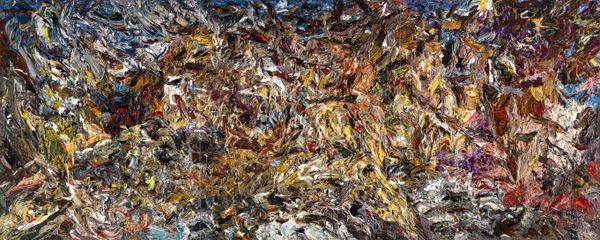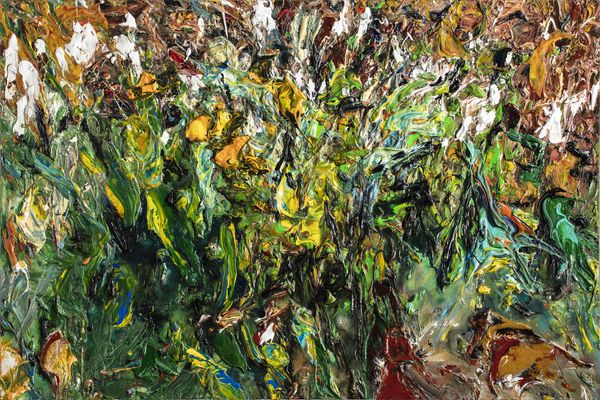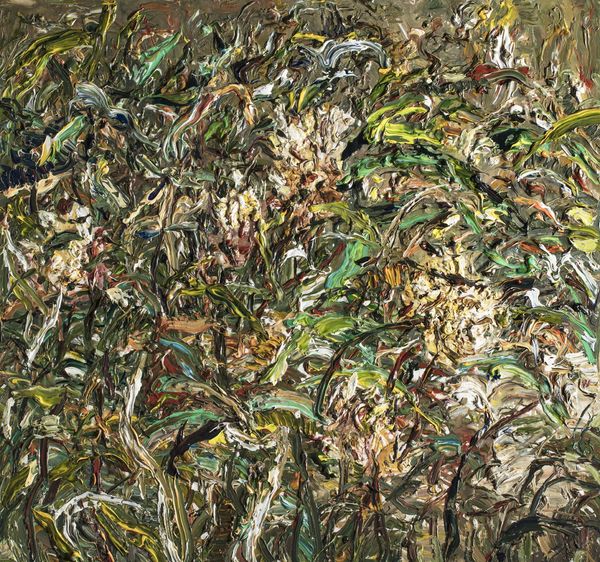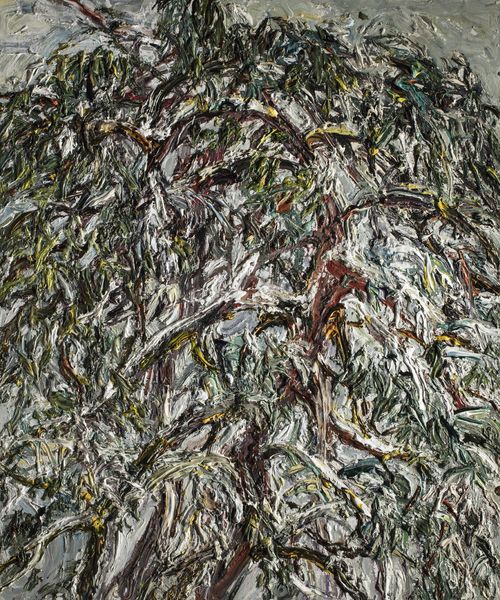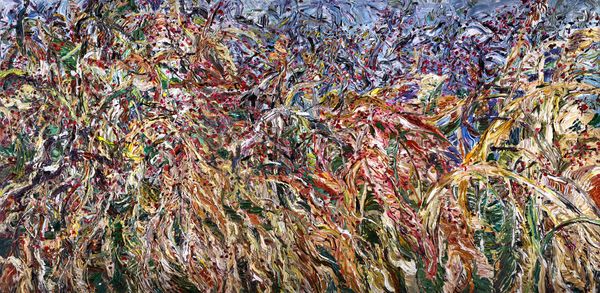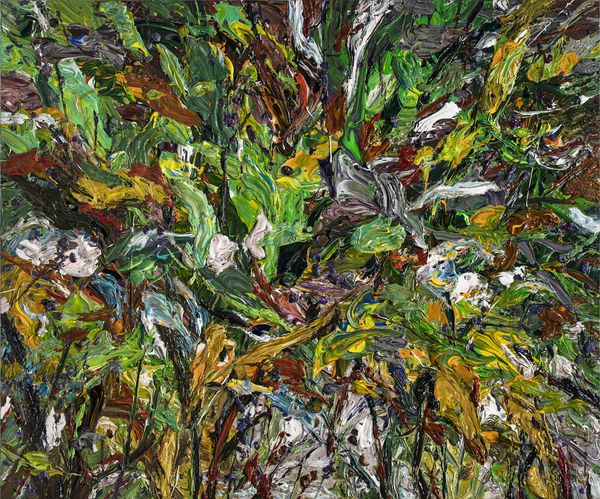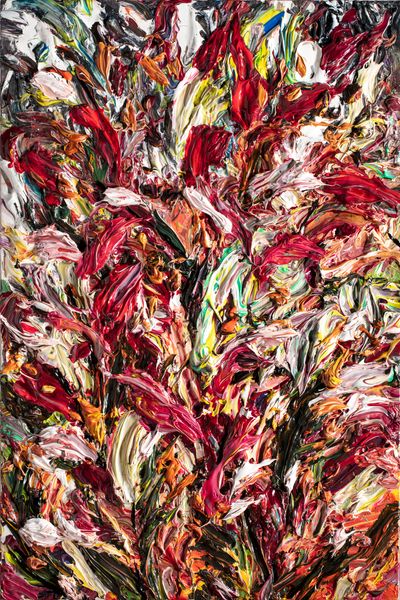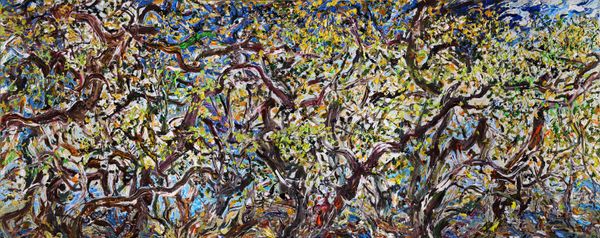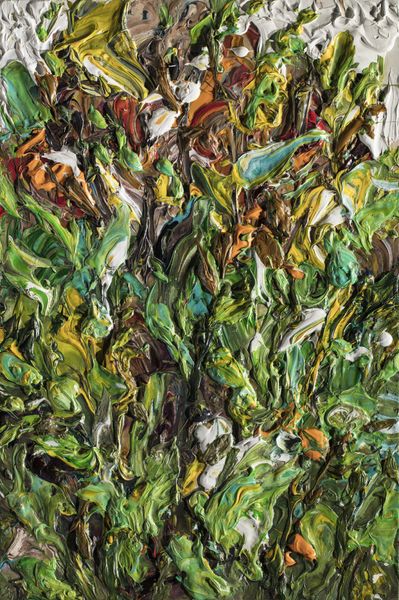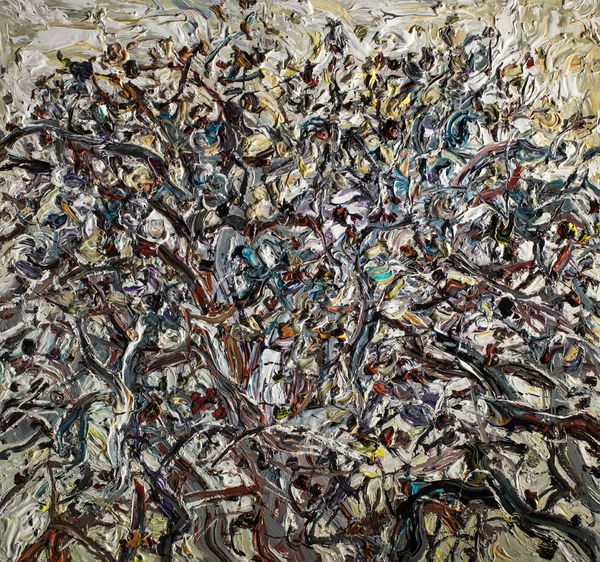
Copyright: ARTERA: FROM ARTIST
Wang Xinfu made this oil painting called 'Winter Lotus Leisure' with thick brushstrokes, creating a textured and layered surface. The image presents a dense thicket of reeds and foliage rendered in muted winter colors, with only slight suggestions of a traditional lotus pond. In China, the lotus is a potent symbol, representing purity, resilience, and spiritual awakening within Buddhist and Confucian traditions. The choice to depict it in winter, seemingly barren, might be a comment on the state of these values, or perhaps the painting is a symbol of hope for renewal. We might ask, what social commentary lies beneath this surface? Is this depiction of natural decay a metaphor for the transformations China has undergone? To fully understand Wang Xinfu's work, we need to consider its place within the complex history of Chinese art and its institutions. This is where the art historian steps in, using archives, publications, and cultural studies to understand better the social life of art.
Comments
No comments
Be the first to comment and join the conversation on the ultimate creative platform.
